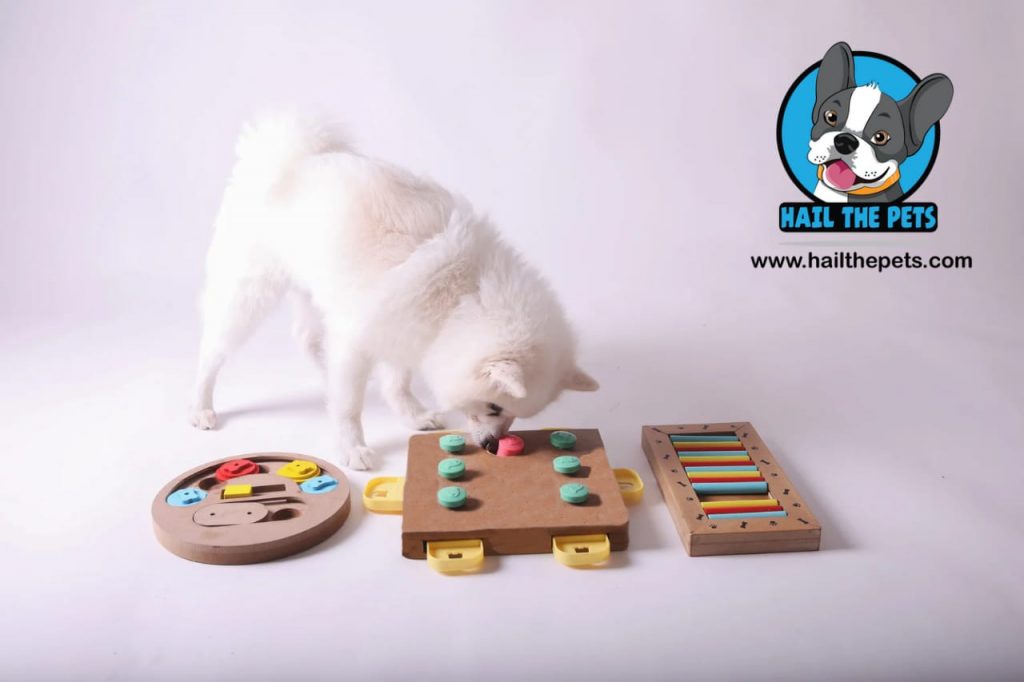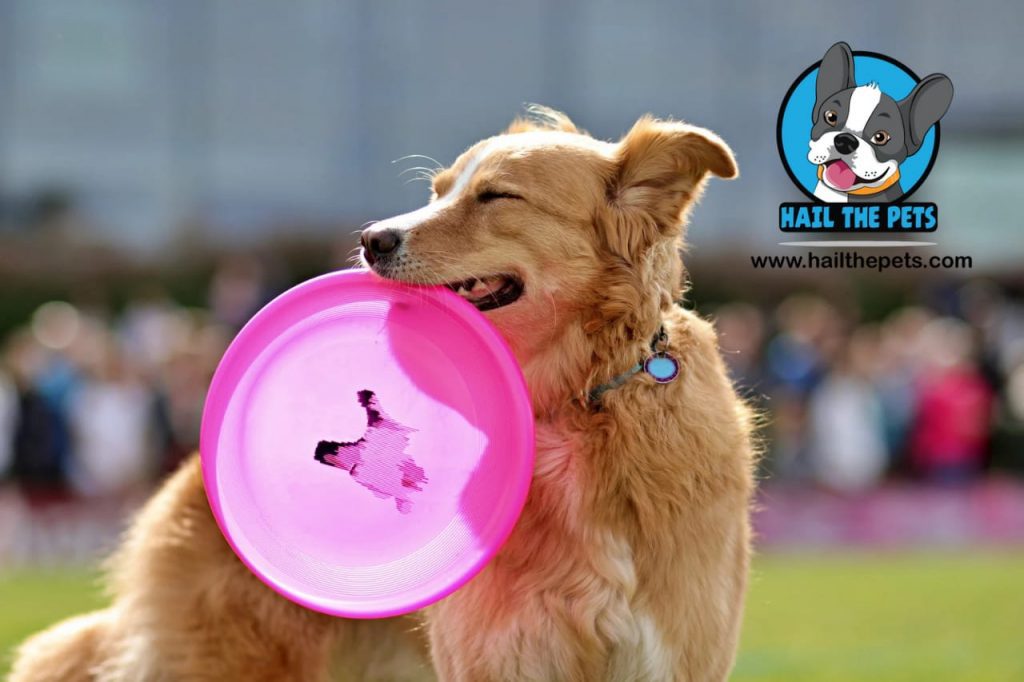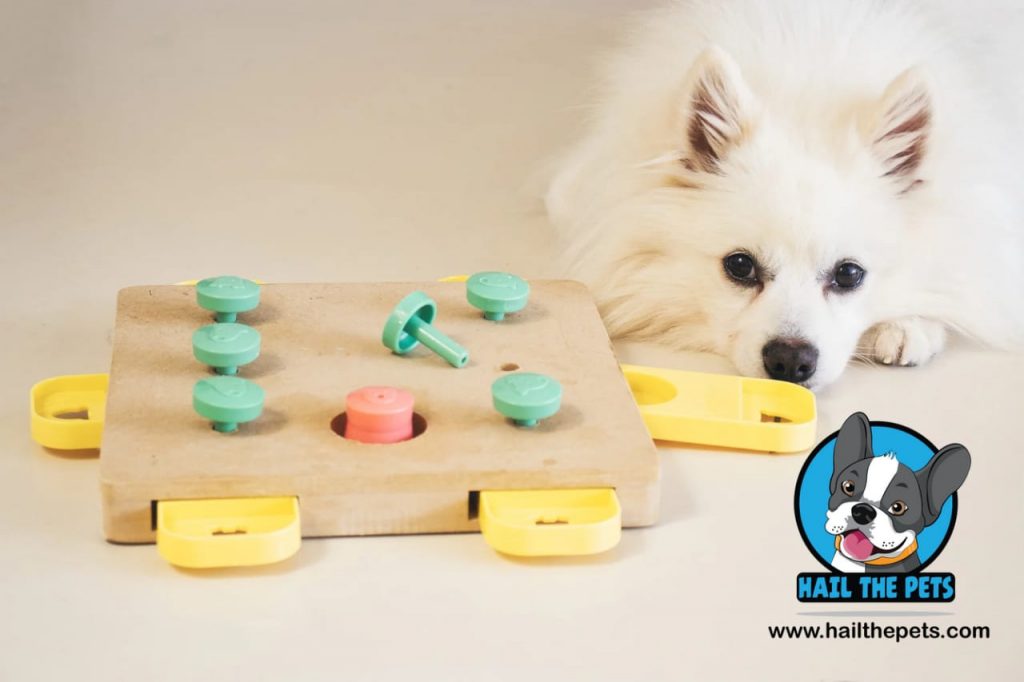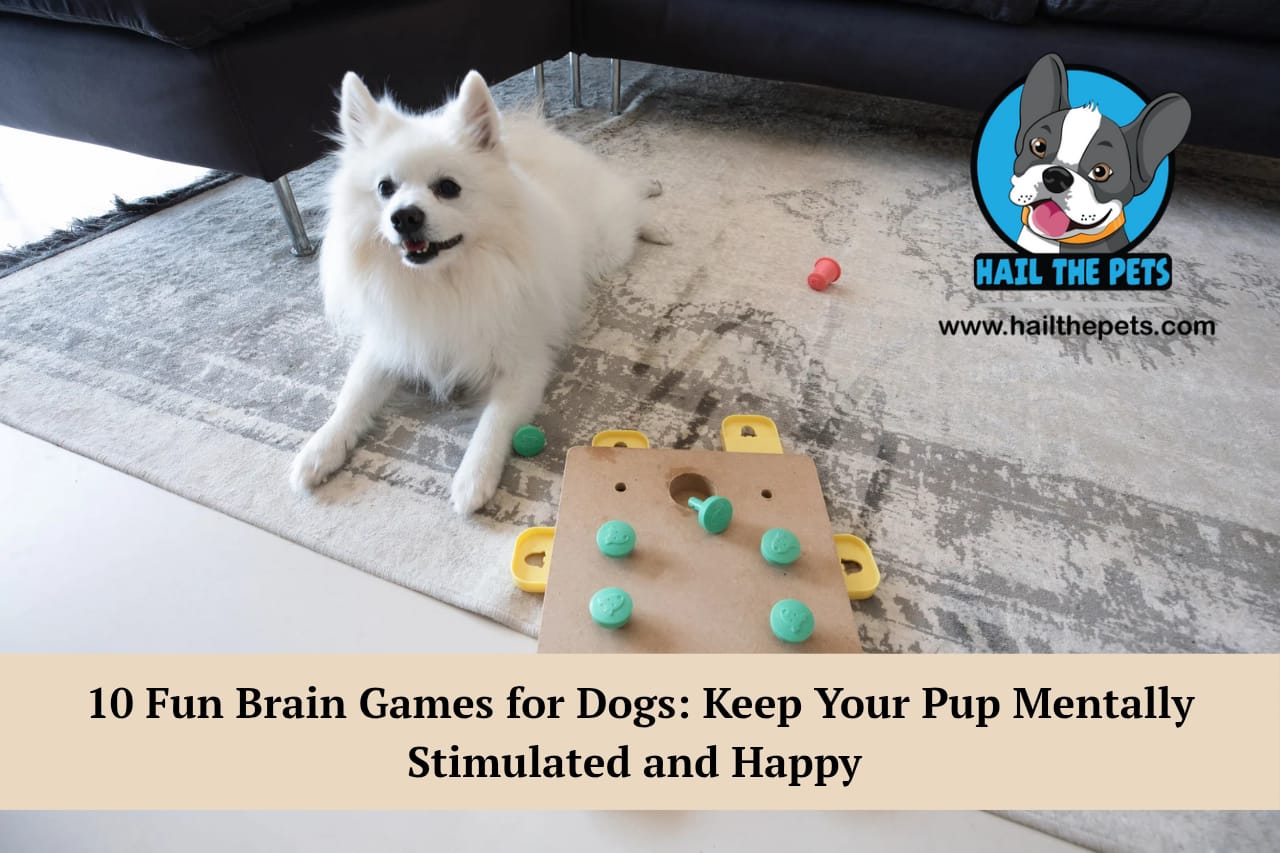Bruno, a spirited little beagle was once the neighborhood mischief-maker. Couch cushions were shredded and the garbage bin was a personal playground. His owner, Aisha, felt helpless until she discovered brain games for dogs.
She started with a simple DIY puzzle made from a towel and hidden treats. The transformation was incredible. Bruno’s restlessness turned into focused excitement. He stopped wrecking things and began waiting eagerly for his daily challenge.
Over time, his behavior transformed to less barking, no chewing, and more calm. Mental stimulation was exactly what Bruno had needed all along.

10 Fun Brain Games for Dogs to Keep Your Pup Content
Keeping your dog physically active is important but what about their mind? Introducing regular brain games for dogs not only reduces boredom and anxiety, but strengthens your bond and brings out the best in their behavior.
In the next few minutes, we’ll dive into exciting ways to engage your dog’s brain using household items, toys, scent trails, and training all backed by examples, results, and one proven scientific fact.
Interactive Dog Toys for Mental Stimulation
Think of interactive dog toys for mental stimulation as your dog’s version of a crossword puzzle. These toys engage their nose, paws, and brain that make them work for every treat. Treat-dispensing balls and puzzle feeders are particularly effective. As your dog nudges and rolls the toy, they’re learning cause and effect while getting rewarded.
The best part is you don’t need to entertain them nonstop. Take Max, a boisterous Labrador that has too much energy. His owner introduced a spinning treat ball, and within days, Max became focused, relaxed, and visibly happier. Instead of chewing furniture, he now spends 20 minutes solving his toy before breakfast.
According to Chewy’s pet behavior expert Mikkel Becker, spending even 15 minutes daily with interactive dog toys for mental stimulation can significantly reduce destructive habits and increase emotional satisfaction in dogs.
Read more: Dog’s Body Language: A Guide to Help You Build Stronger Bond with Your Dogs
DIY Brain Games for Dogs
No fancy purchases? No problem. DIY brain games for dogs can be just as effective. Sometimes even more fun because they allow for customization based on your dog’s personality. An easy one is a muffin tin puzzle. Fill each section with treats, cover them with tennis balls, and have your dog learn to knock off the balls to access the snack. Another favorite is rolling treats in a towel and hiding them in a bunched-up blanket. These brain games for dogs are well-suited for rainy days.
Read more: Dog Anxiety: Behavior, Symptoms, and Treatment
Best Puzzle Toys for Dogs
You crave options that expand with your dog’s brain power. That’s where the optimal puzzle toys for dogs are. Begin with elementary levels such as the Kong Classic with peanut butter, and when your pup has mastered it, move on to multi-chamber toys with sliding levers or flip-tops.
The mental exertion involved in solving these toys is a brain gym workout. Luna, a rescued greyhound, would once inhale her food in seconds and then whine with boredom. But when her meals began arriving in an interactive puzzle bowl, all that changed. Taking her time to figure out the puzzle kept her engaged and alleviated her anxiety. These toys are food dispensing systems, boringness busters, and behavior trainers in one.
Read more: Dog’s Body Language: A Guide to Help You Build Stronger Bond with Your Dogs
How to Mentally Challenge Your Dog
You don’t need to be a professional trainer to figure out how to mentally challenge your dog. It can be as easy as switching up walking routes, teaching a new trick, or asking them to solve a small task before getting what they want.
Even basic obedience with a twist like “sit” before “fetch” stimulates their brain. Kiran, who owns a Border Collie named Dash, says he mixes up Dash’s routine weekly. One week, it’s learning the names of toys.
Next, it’s a new trick combo like “spin, high-five, bow.” Dash is more attentive, calmer at home, and less reactive to other dogs all thanks to these short mental workouts. Know this, if your dog is too tired to chew your socks, you’ve succeeded.
Read more: Exploring Unusual Bird Behaviour: Top Ten Popular Birds to Keep as Pets – January 2024
The Power of Scent Games for Dogs
If your dog had a superpower, it would be their nose. And scent games for dogs let them use it to the fullest. One fun game? Hide treats around a room while your dog waits outside.
Then give the release word “Find it!” and let the hunt begin. It’s amazing to see how focused and joyful they become. A Pit Bull rescued didn’t play with toys at first. But when his owner introduced scent trails with bits of chicken hidden behind cushions and furniture, Rex finally lit up. His tail wagged and posture changed. He played with joy for the first time in months.
Don’t Skip Training: It’s the Ultimate Brain Game
Teaching your dog new tricks isn’t just about commands. It’s an essential part of brain games for dogs. When you teach your pup how to spin, wave, or even “go hide,” you’re giving them a structured challenge that engages memory, motor skills, and listening.
Take Bella, a senior Poodle who struggled with boredom. Her owner taught her to use a paw buzzer by the door when she needed to go out. The training process gave Bella purpose. It also helped her stay mentally sharp despite her age. 5-minute short sessions can do wonders. Always reward with affection and treats. It makes learning feel like a game.

Hide-and-Seek For Dogs
Hide-and-seek is a popular children’s game, but did you know it’s also one of the greatest brain games for dogs? Ask your dog to remain in a room while you hide behind a curtain, under the table, or even in the backyard. Call them and watch the joy unfold as they sniff you out.
A young Golden Retriever learned this game during lockdown. It started as a way to pass time and quickly became the highlight of her day. She started using her nose more actively. Obeying “stay” better, and showing more focus overall. This game builds trust, recall, and confidence all while being fun and easy to do indoors or out.
Read more: 10 Fun Brain Games to Keep Your Dog Happy and Engaged
Meal Time Magic: Puzzle Feeders as Enrichment
Why serve food in a bowl when it can be a challenge? Puzzle feeders and slow-feed bowls turn dinner into a fun, rewarding event. They’re a perfect combination of play and necessity—every bite is earned through effort.
Joey, a Beagle with a tendency to inhale food in seconds, benefited greatly from a slow-feeding maze. His meals lasted longer, and his bloating issues reduced. Even better, he appeared more satisfied afterward. Combining feeding with problem-solving creates double the stimulation, especially for food-motivated dogs.
High-Tech Fun: Taking Brain Games Digital
Tech-savvy dog owners are now exploring digital brain games for dogs, including touchscreen puzzles and remote-operated toys. Companies like Joipaw are designing dog-friendly games that offer visual and auditory stimulation with treat rewards.
These systems are still new, but they show where enrichment is heading. While nothing replaces the nose-to-the-ground fun of scent games, high-tech options can be a great supplement, especially for indoor dogs or during recovery from surgery. Always supervise and limit screen time after all, dogs still prefer your company over a tablet.
“Sit and Observe” Walks Work Wonders
Mentally stimulating your dog means doing less instead of more. Rather than a bouncy walk, sit on a bench with your dog and let them sniff the air. Watch people and drink in their surroundings. This passive stimulation calms their nervous system and provides them with a healthy means of exploring.
Milo, an anxious rescue terrier, used to fear going for walks. But after his owner began taking 10-minute “watch and relax” breaks at the park, Milo settled in and bird-watched rather than trembling with trepidation. These quiet moments can be every bit as engaging as playtime.
Real Results from Real Dogs
Every dog featured here, Bruno, Max, Trixie, Rex, Bella, Sasha improved their behavior, reduced anxiety, and became more joyful because of these activities. You don’t need to spend a fortune or be a pro. You only require creativity, patience, and a few minutes every day. The Centre of Applied Pet Ethology (COAPE) states that brain stimulation keeps the brain healthy and slows down cognitive aging in old dogs.

Conclusion
Your dog isn’t just a ball of energy. They’re thinkers and solvers. You’re giving them a richer and fuller life by incorporating brain games for dogs into their routine. Every small challenge strengthens your bond through interactive dog toys for mental stimulation, easy DIY brain games for dogs, or even sniffing out treats in a box.
The key isn’t being perfect at all things. It’s showing up every day with compassion and a dash of challenge. Even ten minutes of mental enrichment can shift your dog’s mood and bring you both closer. What brain game will you and your dog be playing today? The next great adventure might be just one puzzle away.
